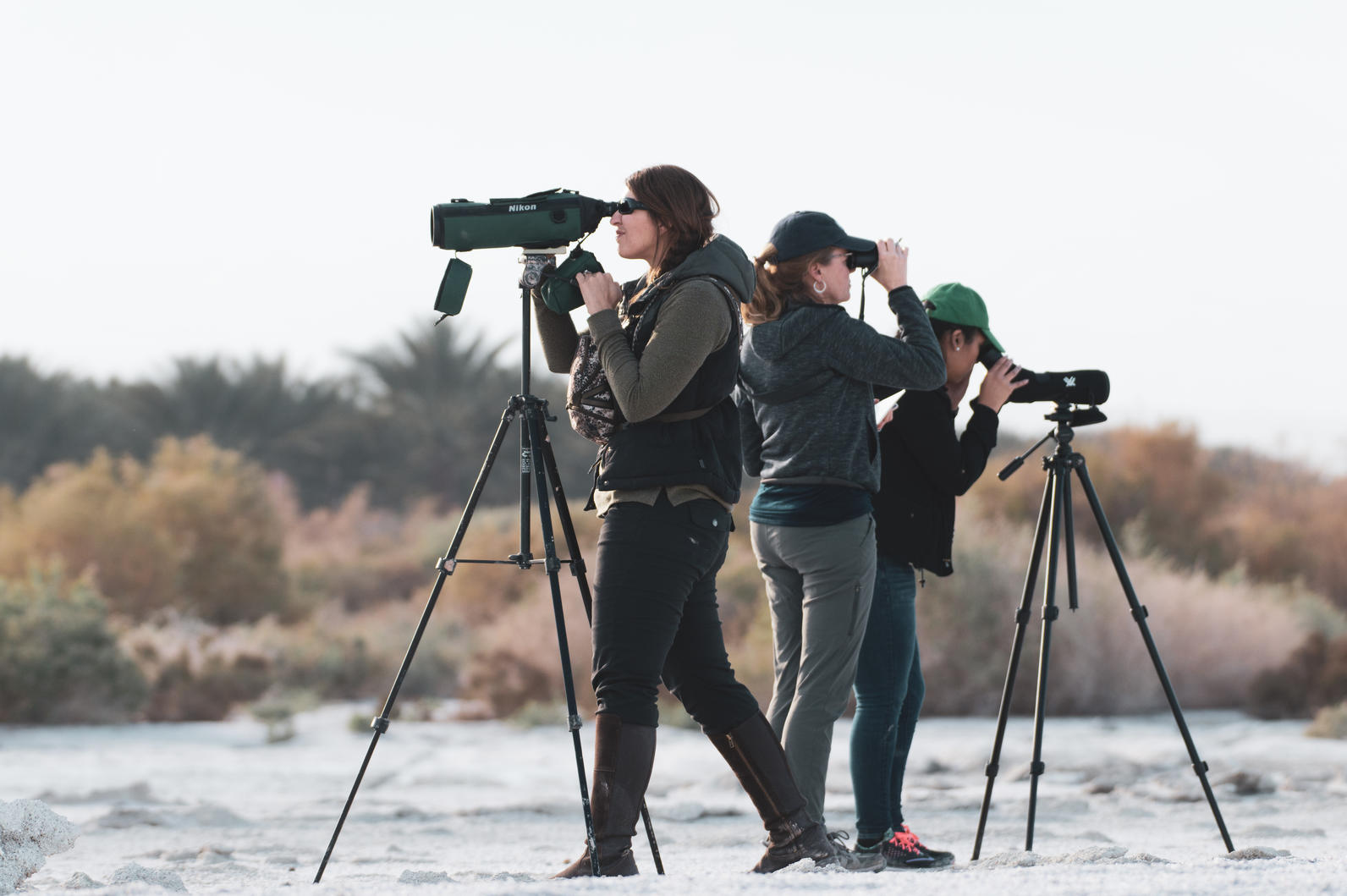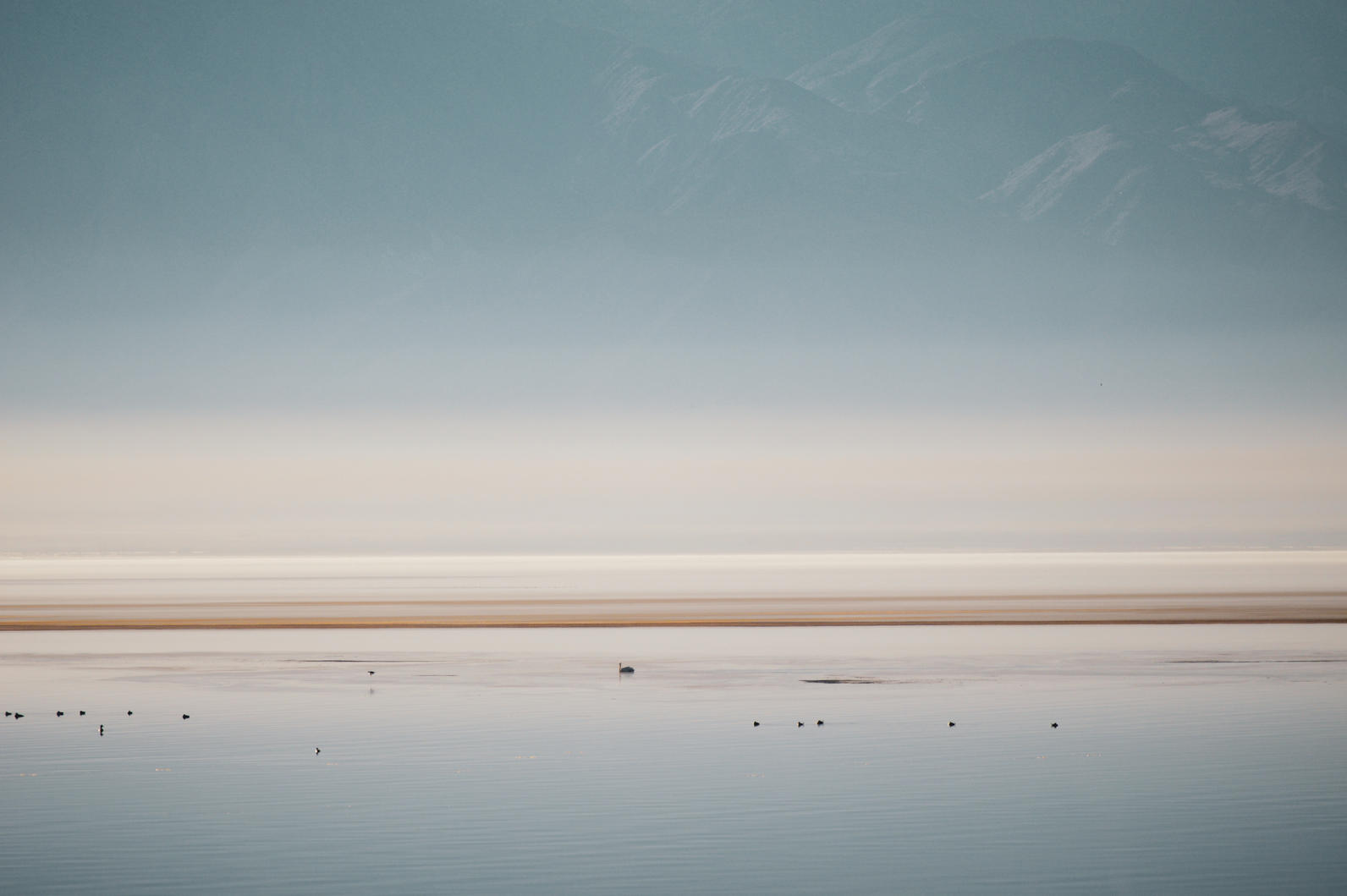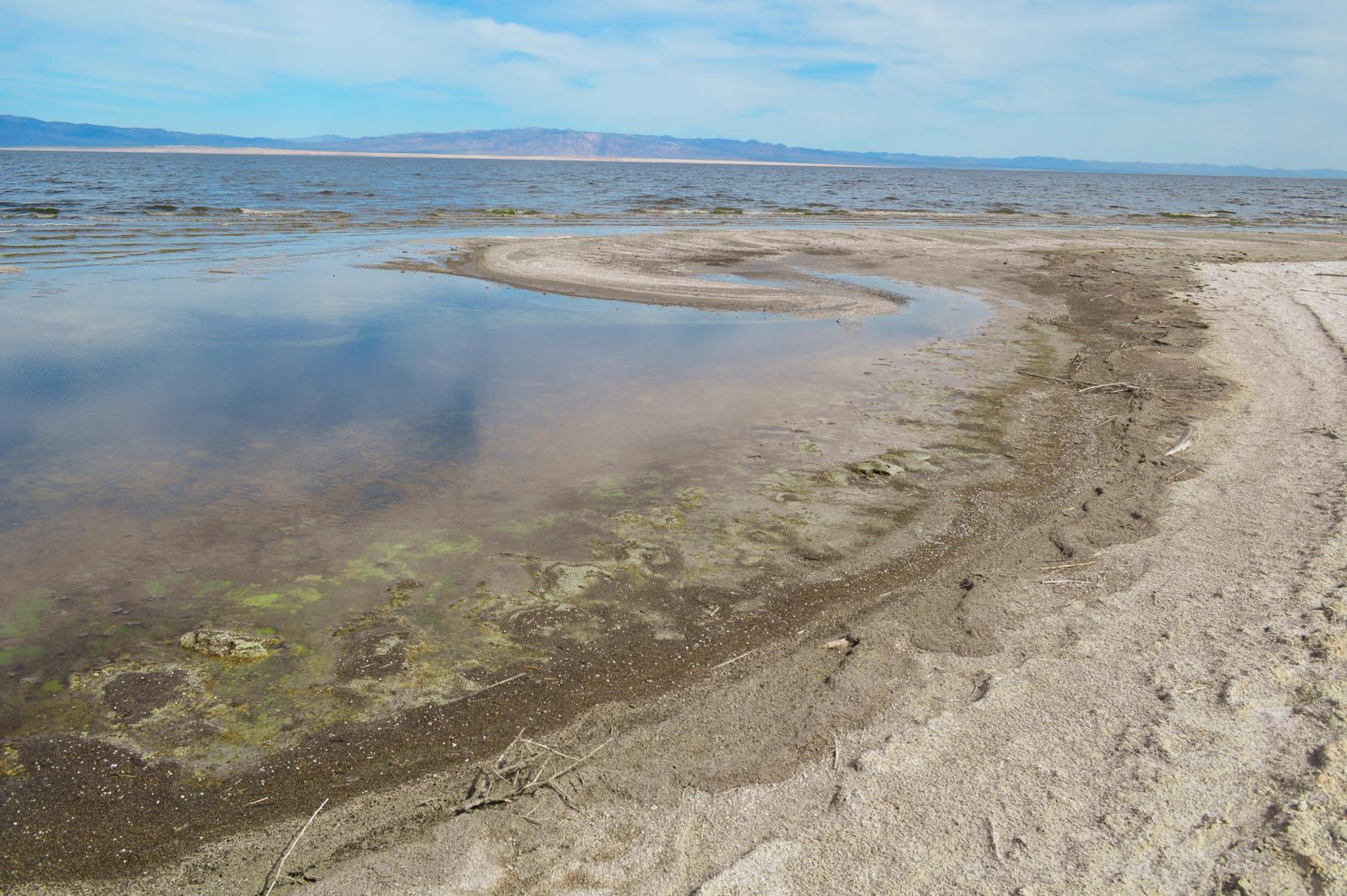If climate change has a silver lining –even a small one – it’s that it has provided an opportunity to take a closer look not only at the way we use natural resources, but also the ways in which inequity in a society undermines the wellbeing of its most vulnerable citizens. Climate change is the force behind increasingly common phenomena like the acidification of the oceans, rising average global temperatures, and desertification that affect the world’s poorest communities disproportionately. In the West, we talk more about the prospect of climate change scenarios because, as industrialized nations, we will be the last to feel the effects of climate change. However, vulnerable populations of industrialized nations do not have time to discuss hypotheticals. They are feeling the effects now.
The communities near the Salton Sea, those of the East Coachella Valley and Imperial Valley suffer from respiratory issues associated with poor air quality in the region. The drying of the Salton Sea is cited as contributing to this poor air quality due to the dust that emits from its ever-expanding, exposed lakebed, or playa. Moreover, there air quality issues associated with algae that grows in its waters.
As a result, children in this region of Southern California suffer from asthma rates 80 percent higher that of the national average. COVID-19 has compounded these already significant health risks in communities like Mecca, Oasis, and Brawley, communities where many members work in agricultural fields, live in close-quarters, and lack access to health care. This consequence of the coronavirus pandemic was outlined recently in a piece published in the Desert Sun, as well as in LA’s La Opinion, the largest Spanish-language publication in the United States.
One of the contributors to the piece, Dr. Ryan Sinclair of Loma Linda University, is one of several researchers collecting data from the Salton Sea to study the effects of the Sea’s drying. What makes Dr. Sinclair’s work unique is that his research efforts intentionally include community members both in the collection of the data itself by inviting people to join him on his field days, or community monitoring days, as well as by providing the findings to the public. Such inclusion may seem only marginally significant at first glance, but the inclusion of communities in the collection of scientific data is profound in that it gives the layperson insight into the scientific process. In addition, it also allows for community needs to be incorporated into the research itself from the start.
Last week we sat down with Dr. Sinclair, a native of the Coachella Valley, for an interview.
Audubon: Tell us a little bit about yourself. What is your connection to the East Coachella Valley and to the Salton Sea?
Sinclair: I grew up in the desert, in Morongo Valley and Desert Hot Springs. I have a master’s of public health, a PhD in water quality, and a post-doc in environmental microbiology, so, I think of myself as an environmental microbiologist, a water quality specialist, and an exposure assessment scientist.
I look at how people are exposed to environmental pathogens and try to quantify that exposure in terms of concentrations to figure out probabilities of getting sick. And so, you just look at how people are exposed and then try to minimize exposure.
I really like field sampling, and so I’ve always been fascinated by the Salton Sea because it’s such a big body of water that’s just sitting there and is so full of uncertainty. There are so many rumors about it and it’s so politically hot. People want to talk about it, want to do projects there, want to make changes to it, want to save it, want to forget about it, all of the above.
Yet, there is so little science associated with what people know about the Salton Sea. And when there is science, it is what people call a ‘wicked policy problem’ because it’s difficult on so many different levels. The people who do own scientific data about the Salton Sea don’t want to necessarily release it. They might have data that they’ve collected, but it’s owned by the Imperial Irrigation District or the Salton Sea Authority, etc., so a lot of the data that is there are not necessarily published in the literature; they are kind of held onto for policy makers to use to make decisions about the Salton Sea.
It’s an environmental justice issue. We have to work on the Salton Sea and publish our data to make available to the public. That way we can figure out what’s going on and quantify the hazards that are in the Salton Sea.
Audubon: We had talked about how scientific data becomes more valuable if it is available to the public. Is that where the community science aspect of your work comes into play?
Sinclair: You know, when scientists go out and collect data, that is important, and you can have policy output from that. But if the communities aren’t involved from the early stages of that kind of research, then they are never going to understand what that research is about.
Scientific studies are always really complicated in the end … so, a community would need to take those studies and then try to convert them into what they are looking for. When you have a community science approach, you do the science that has a direct policy implication, meaning that even while you’re doing it, you’re contributing directly to policy change.
Audubon: How long have you been collecting data at the Sea?
Sinclair: We’ve been going out for two years collecting map information. We do something called balloon mapping, where we walk along the shoreline with a huge balloon that has a camera attached to it and take a series of images to make a shoreline image that allows us to track changes over time. Is it decreasing? Is it receding? Is it changing at all?

Audubon: The shoreline has been receding, obviously. Is there something you have found that you didn’t expect?
Sinclair: It is receding, around 150-200 feet in the area around the North Shore Yacht Club between 2018 through till now, which we are able to show on maps that we made with balloons or drones, and also maps that we’ve made together with the community, specifically with Alianza Coachella Valley.
I’ve been trying to see where the algal blooms happen. One of the things you’ll see, especially early in the morning at the North Shore Yacht Club, is a film that forms above the water. I don’t know what it is exactly, some of it is green and some of it is yellow.
There is a phenomenon called, ‘gypsum blooms,’ and it’s a cycle associated the vertical mixing of the lake, where lower layers will come to the top. It would be interesting to see how that’s associated with algae. I know that gypsum is sometimes confused with algae in the satellite data.
Ultimately, I’m interested in the health impacts of algae. For example, what is the chance that an algal bloom will produce toxins that go into the air? If the algae are blooming there, we want to know, because people, as well as birds and other animals, will be facing potentially toxic ramifications.
Audubon: Usually when we talk about algal blooms being harmful, we talk about the algae itself, and the microbes that decompose the algae, taking up oxygen from the water, leading to fish die-offs. You’re saying that algal blooms can also lead to air contamination. Could you expand on that?
Sinclair: If there is an algal bloom happening and there are harmful algal species, or other microbes being emitted into the air, they can become aerosolized.
Becoming an aerosol means that these microbes are going to stay in the air a little longer as opposed to a droplet that would fall out more rapidly. A lot of things can go into the air, it can be the actual algal organism, or it can be toxins that are produced from the bloom.
The other thing about the Salton Sea is that it is a bowl, it’s the lowest part of the Valley. So, if you’ve been there when there is no wind but there is smoke, say from an agricultural fire, you can watch it as it drifts over to the Sea and just hovers above it. Similarly, on no-wind days, for example, whatever comes out of the Salton Sea just hovers around it. So, if there is something harmful coming out of the Sea, if it is an aerosol, it will stay in the air for a while, and hover around the shoreline. It could get blown to where people live and affect bird populations as well.
This is a thermal inversion-like phenomenon. So, if you go to a city like Salt Lake City, for example, the air on the ground in the early morning is colder than the air above it, so pollutants will stay on the ground where the air is cold instead of rising up and being blown out of the valley. What happens at the Salton Sea is similar in that there is a temperature difference associated with the low elevation, where winds will blow above it and not into it, so what you’ll see is the dust hovering just above the Sea’s surface. This inversion effect is significant since toxins are being emitted from the playa and the Sea itself.
Audubon: So, as the lowest point in the Coachella Valley, the Salton Sea is not just collecting water, it’s also collecting air contaminants?
Sinclair: That’s right, air contaminants and dust.

Audubon: As somebody from the region and a public health professional, what is your vision for Salton Sea management going forward?
Sinclair: I think there is a lot of opportunity there for the built-management of the Sea, for example the North Lake Plan. Also, for more facilities to be built around the Sea to manage the water there. I went to Owen’s Lake and saw that there are some neat things they did up there, like dust control projects, as well as areas that are used to demonstrate what dust suppression is, and visitor centers for birding.
I feel like we could be doing that. People say that Owen’s Lake was successful because it’s so small compared to the Salton Sea. But the difference is that at Owen’s Lake we are talking about the whole lake, while at the Sea what we are most worried about is the periphery, so I think it is doable.
Better public perception of the Sea would help too. Everyone thinks of it as a toxic soup, but it’s really not. It’s a shallow, saline lake. Every shallow, saline lake has a bad rap. They say it about the Utah Lake, the Great Salt Lake, Pyramid Lake, etc. If we could get an appreciation for what it is, I think it could become an attractive destination. We should build public amenities for people and families to go out and see what it is.
There could be a lot of water management done there as well. We don’t have to just say, “this area is just going to be playa, and you don’t want to go near it because it’s muddy and stinky.” We can do a lot better than that.
Learn more about Dr. Sinclair’s environmental justice work on his website.
Audubon California is collaborating with Dr. Sinclair, Alianza Coachella Valley, and Coachella Valley Waterkeepers in their community science efforts. To learn more about this work, please contact us at saltonsea@audubon.org.
Follow us on Instagram @audubon.saltonsea







